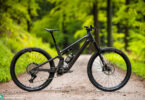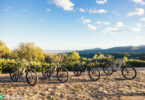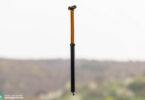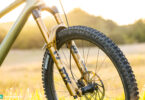Not long after Fazua unveiled their new Ride 60 motor, TQ follow suit introducing their own light-assistance e-bike drive, which is supposed to deliver the most natural mtb ride feeling ever achieved by an eMTB motor. We tested the two systems individually and pitted them against each other to see what they’re capable of. Are we witnessing the birth of a new eMTB generation and should the current top dogs from Bosch and Shimano start worrying about their future?
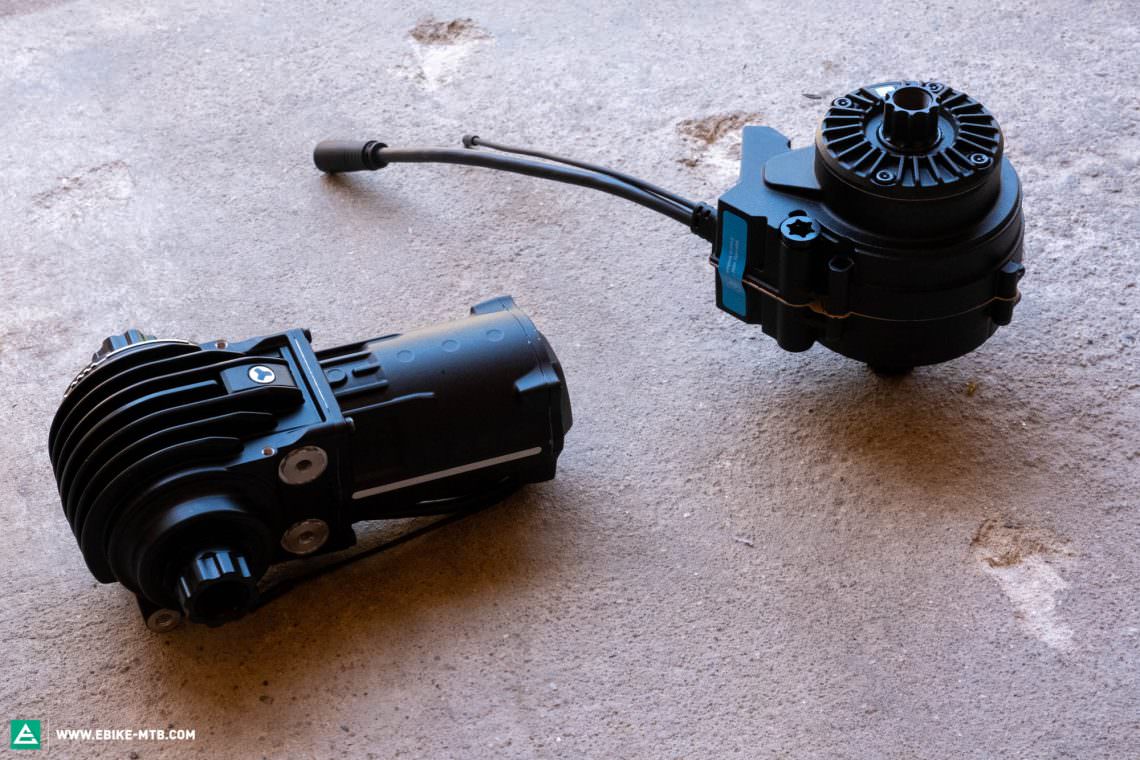
E-bikes are constantly evolving and with them are their motors. On one hand, there are the top dogs of the eMTB segment, Bosch and Shimano, which are both devoted to the “raw-power” credo, thus engaging in a savage battery arms race. For the most part, their common goal is to combine the best possible handling with the biggest possible battery capacity, a delicate balance that’s hard to achieve but one the Canyon Spectral:ON CFR with a massive 900 Wh battery strikes perfectly.
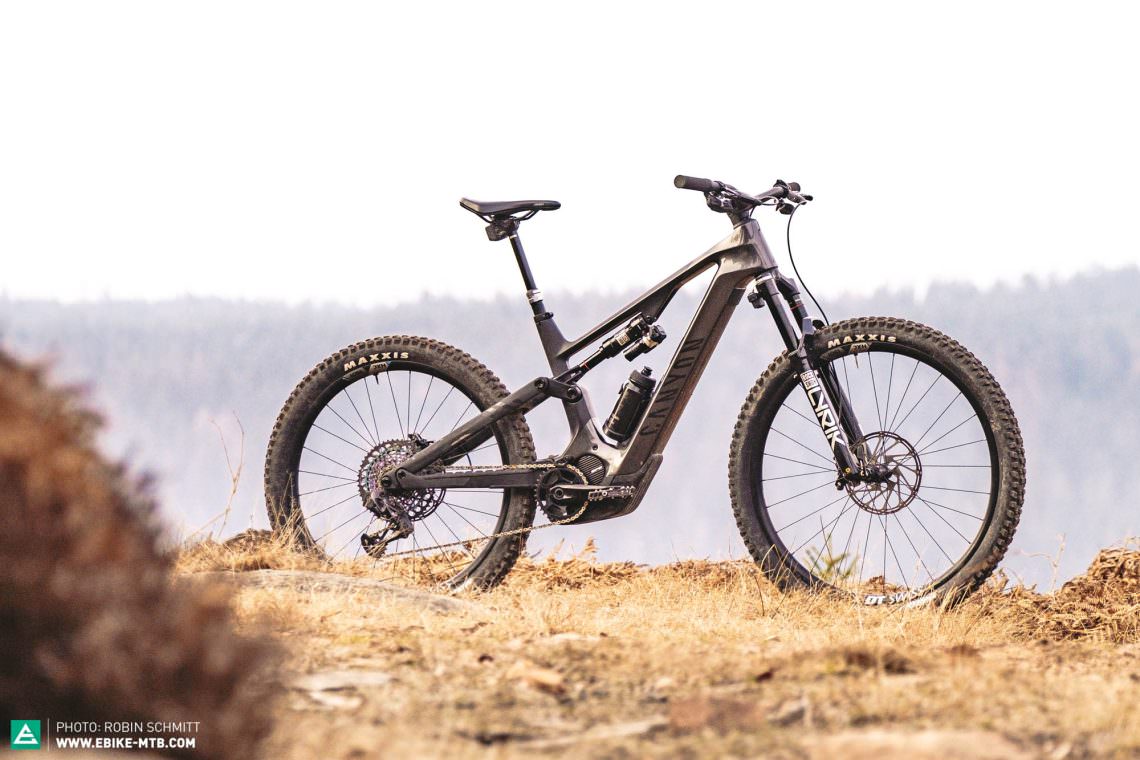
At the same time, we’re witnessing a reverse trend, with other manufacturers favouring a natural ride feeling over raw power, thus developing lighter e-bikes with a smaller battery and weaker motor that offer more discreet assistance and are more reminiscent of analogue mountain bikes, like the Orbea Rise and Specialized Levo SL, for example. With its small battery, low system weight and powerful motor, the Rotwild R.E 375 PRO is the exotic in-betweener amongst eMTBs.

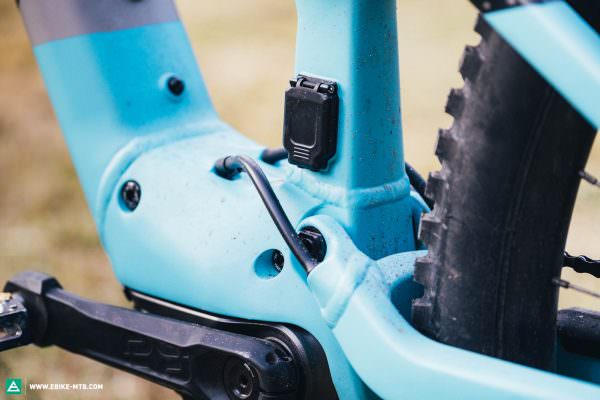
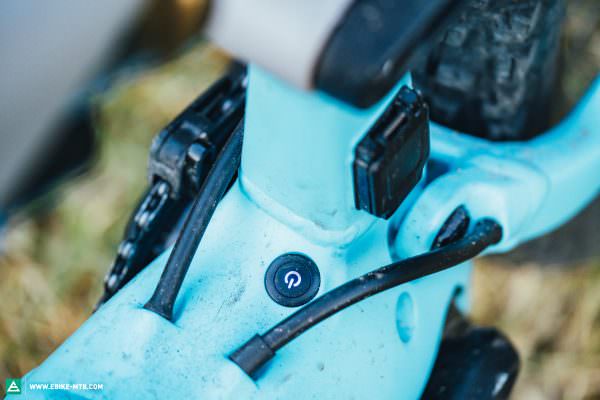
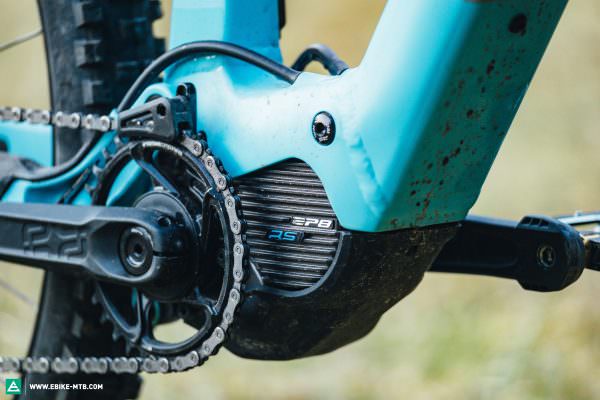
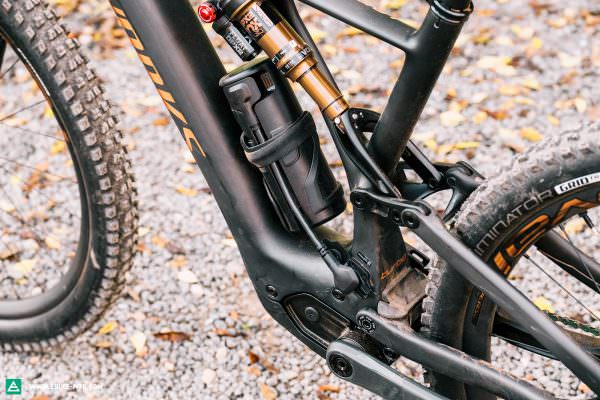
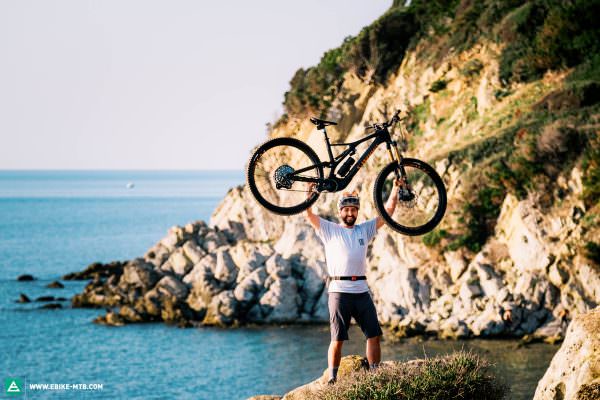
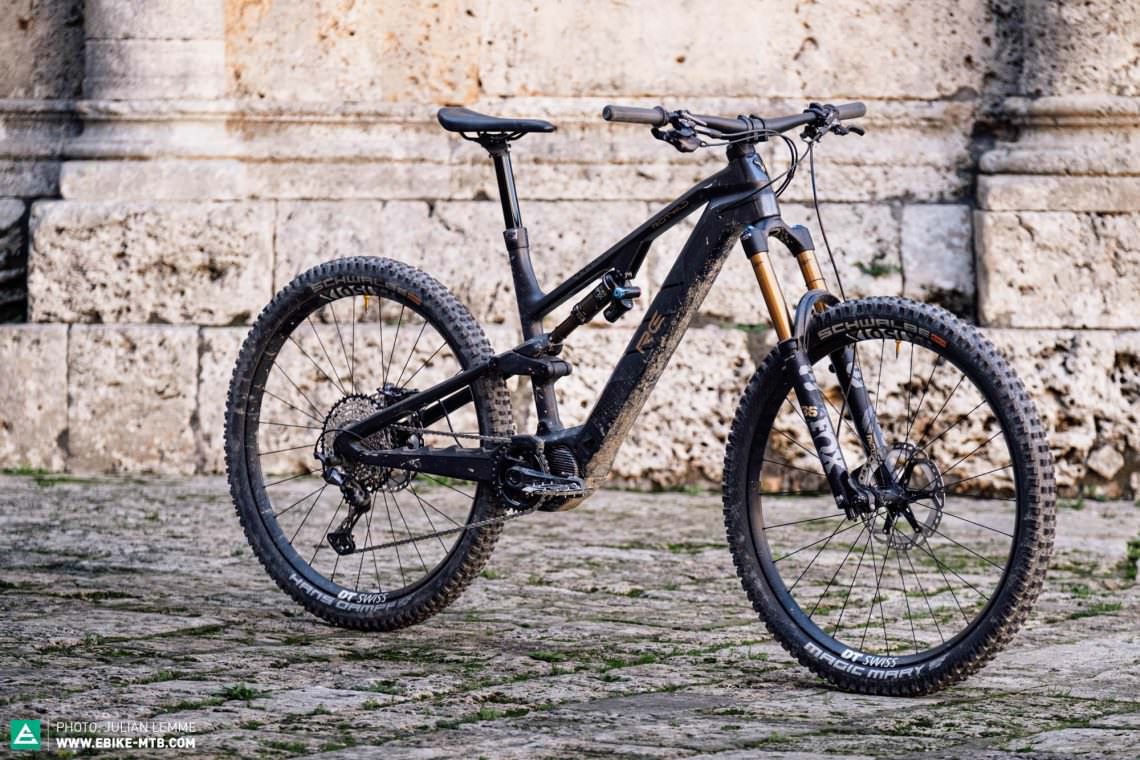
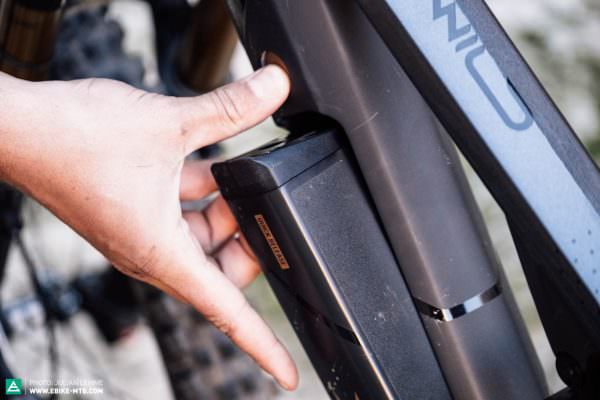
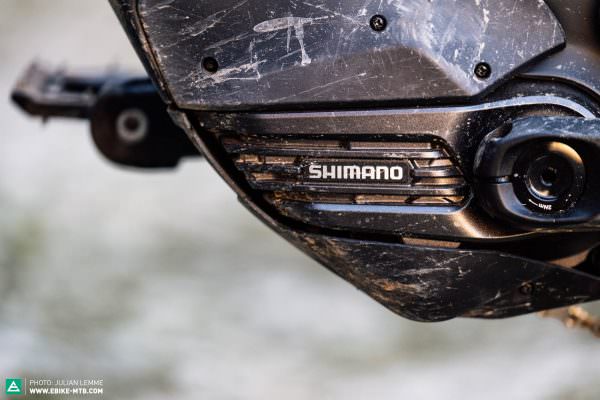
This shows that the Light eMTB category isn’t as clearly definable as we might think, with bikes churning out anything between 35 and 85 NM torque and feeding off batteries with around 400 Wh capacity on average. With their Light-eMTB flagship models, most manufacturers break well under the 20 kg barrier and (try to) achieve the same goal: offer the most effortless and agile handling possible, both on the trail and when lifting the bike onto a roof rack, for example.
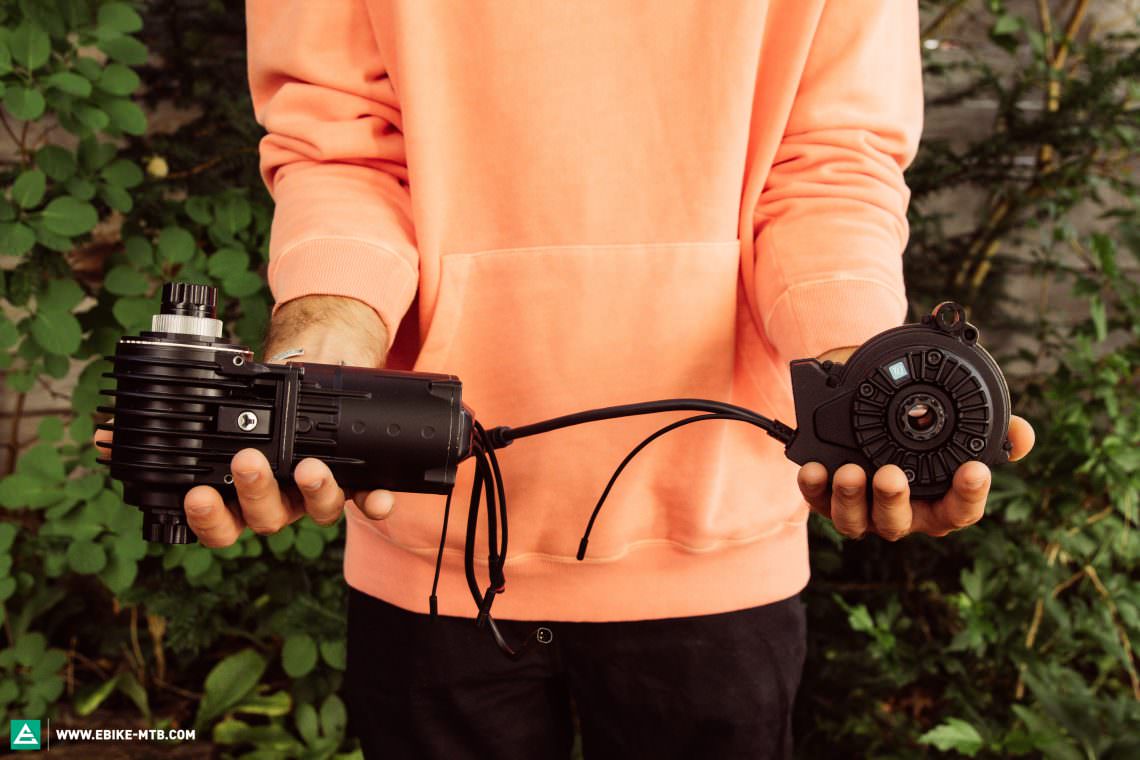
With the new FAZUA and TQ drives, two well-known motor manufacturers have released a brand new light-assistance motor that could compete with the current top dogs while at the same time shaking up the market of analogue bikes. As for now, TQ have signed an exclusivity agreement with American bike manufacturer TREK, but we’re excited to see which manufacturers will use TQ’s new drive system once the agreement expires. We pitted the two motors against each other in different situations and can tell you how they differ and whether they’re capable of converting even hardcore full-boost eMTB devotees.
New TQ HPR 50 and FAZUA Ride 60 hard facts
| Motor | TQ HPR 50 | FAZUA Ride 60 |
|---|---|---|
| Torque | 50 Nm | 60 Nm |
| Max. nominal output | 300 W | 350 W (450 W in Boost) |
| Motor weight | 1,849 g | 1,986 g |
| Battery capacity | 360 Wh | 430 Wh |
| Battery measurement (LxHxW) | 370 x 64 x 50 (470 mm length with handle) | 365 x 75 x 50 (removable) |
| Battery weight | 1,806 g (removable) | 2,280 g (removable) |
| Display | detailed riding information shown on a 2” black and white display integrated into the top tube | 5 multi-colour LEDs in a top tube hub or on the handlebar remote |
| Overall weight | 3,655 g | 4,266 g |
The power of the TQ HPR 50 and FAZUA Ride 60
As the spec sheet already suggest, in terms of sheer power both motors play in a league below the flagship motors of Bosch and Shimano. When riding in the strongest support mode, lightweight motors feel a bit like a Bosch or Shimano drive in ECO. Both contestants of our shootout require a higher cadence than their high-torque competitors. As a result, dropping your feet on the pedals and letting the motor shuttle you up the mountain – like the Bosch Performance Line CX Smart System allows you to do in Turbo mode – isn’t an option with light-assistance motors.
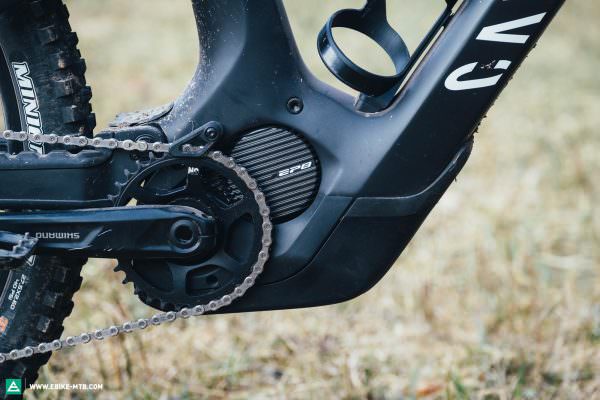
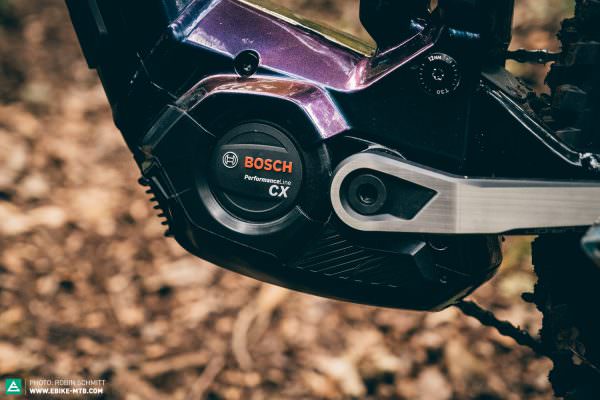
However, the spec sheet alone doesn’t speak for the character of a motor and it’s far more important to understand how, when and for how long a drive delivers its power in a given riding situation. In this respect, the FAZUA has a clear advantage over the TQ, with the additional 10 Nm torque making a real difference even with cadence fluctuations. As a result, it’s sprightlier than the TQ on short spontaneous counter-climbs even if you’re riding in the wrong gear. The TQ, on the other hand, requires a more thoughtful shifting strategy to achieve optimal operational performance. All in all, it calls for a slightly higher cadence and delivers a little less power – but you’ll get used to it after a short while.
Operation and display on FAZUA and TQ bikes
FAZUA employ their proprietary Ring Control handlebar remote, which relies on just one moving part, the “ring”. Although this feels a bit cheap, it’s intuitive to operate and can be pushed in three directions: flick up or down to change the support mode, press inwards and hold to activate walk assist. Holding the ring upwards activates the Boost function, which delivers 450 W maximum output for 12 seconds while riding and 4 seconds from a standstill. That’s 100 W more than the 350 W max. continuous rating, providing that little extra oomph for brisk traffic-light takeoffs.
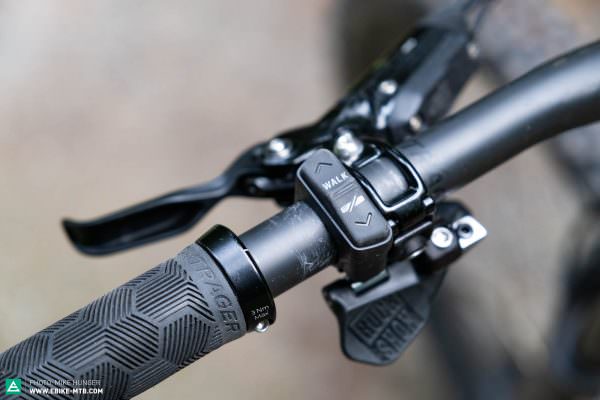
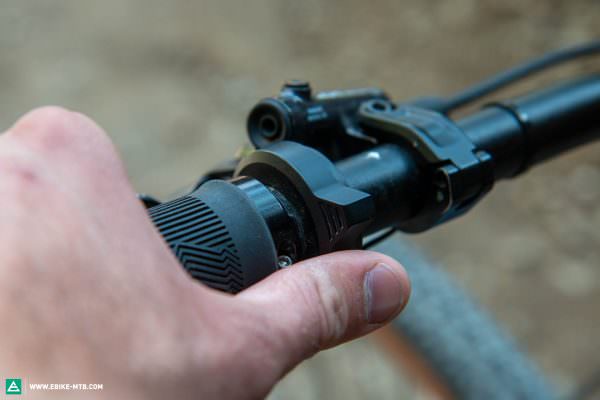
The display consists of 5 LEDs and comes both in the shape of a LED hub on the top tube or as an optional slightly bigger ring remote on the handlebars. The LEDs show the charge status in 20% increments and change in colour depending on the current support mode: green for Breeze, blue for River and pink for Rocket. When you switch off the motor, the LEDs turn white. Overall, the LEDs are rather difficult to read in direct sunlight. As a cool feature, the LED hub can be flipped up to reveal a 1A USB-C port, allowing you to charge your phone or external GPS device on the go.
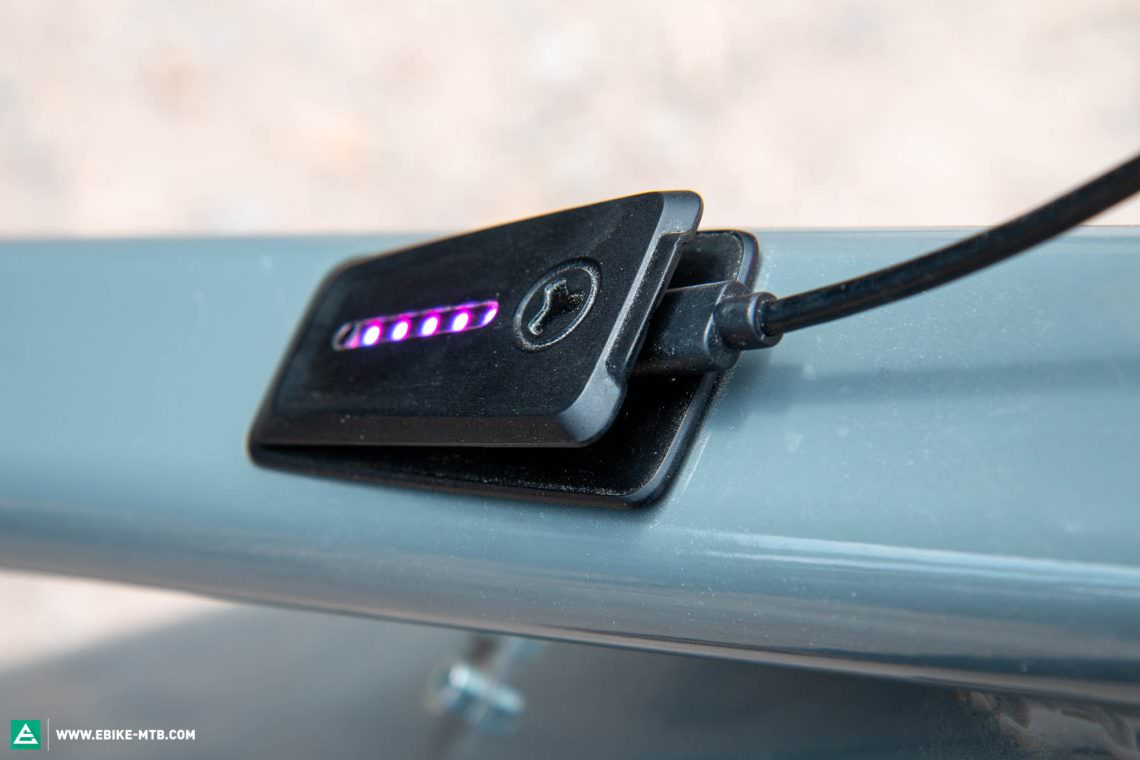
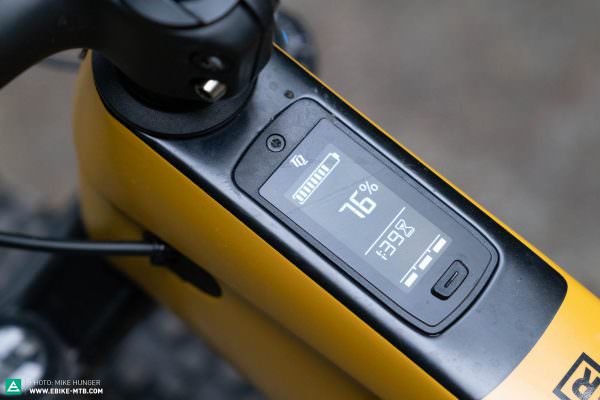
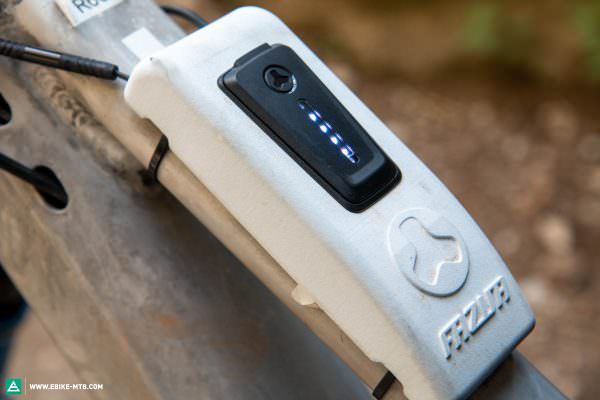
TQ’s handlebar remote has two buttons, both of which have two functions. Push up or down to change support mode, hold up to activate walk assist and hold down to switch off the motor. There’s a third button right under the display on the top tube. Unless FAZUA, TQ offer a comprehensive 2″ black and white display that shows all important riding data. Since there are no colours to distinguish the three support levels, these are permanently displayed using three bars at the bottom of the screen. The battery pictogram at the top of the display shows the charge status in 10% increments. If you want to know exactly how much battery you’ve got left, you can press the button below the display to reveal the charge status in percents. Additionally, you can call up the remaining range in kilometers and hours/minutes as well as your own power input compared to the output of the motor in Watts. This last feature might encourage you to work harder and churn out more power than the motor and also saves you the money of a wattmeter ;).
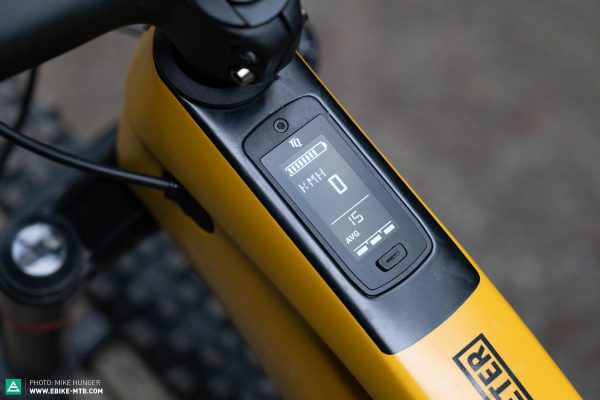
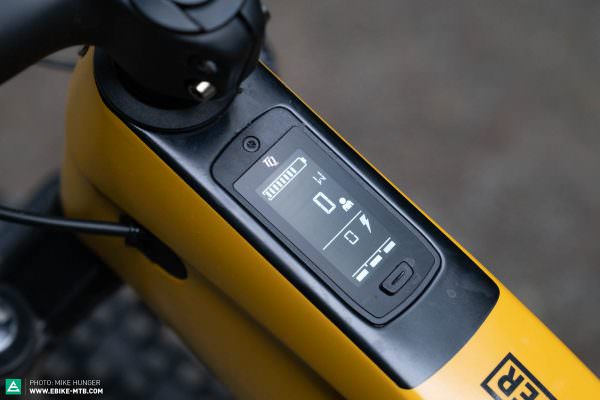
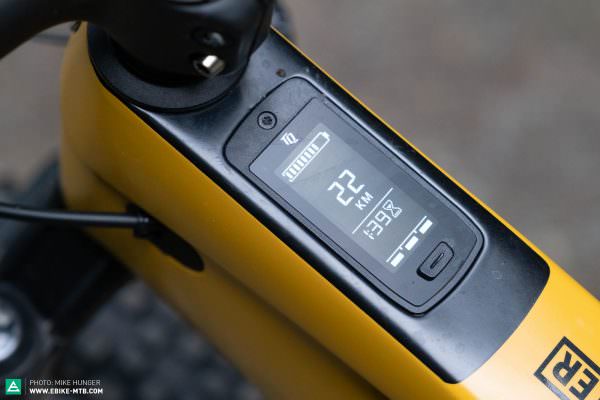
While the Fazua display might only be a suitable option for hardcore purists, the TQ HPR 50 offers a more complete solution, which makes it fun for tech nerds and incredibly helpful for everyone else.
Freedom with frame designs and geometry
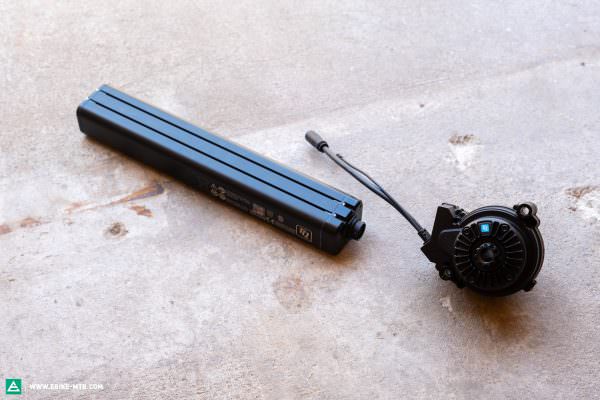
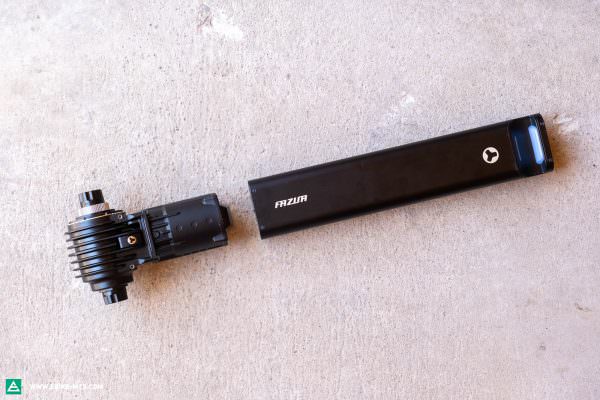
Both motors are very compact and only have a very small weight difference of around 100 grams. While the FAZUA is more elongated, the TQ is wider in the bottom bracket area, which is mainly due to the manufacturer’s proprietary “Harmonic Pinring” drive concept. The FAZUA dissipates heat through a cut-out in the bottom of the frame while the TQ relies on a circle of cooling fins around the crank axle to exhaust excess heat. The fact is that both systems allow for very slim and stealthy frame designs that will look confusingly similar to analogue bikes – the Trek Fuel EXe we tested is already one of them! The compact batteries make it easy to integrate the system into small frames up to size XS, which, in combination with the low system weight, is a true godsend for short riders.
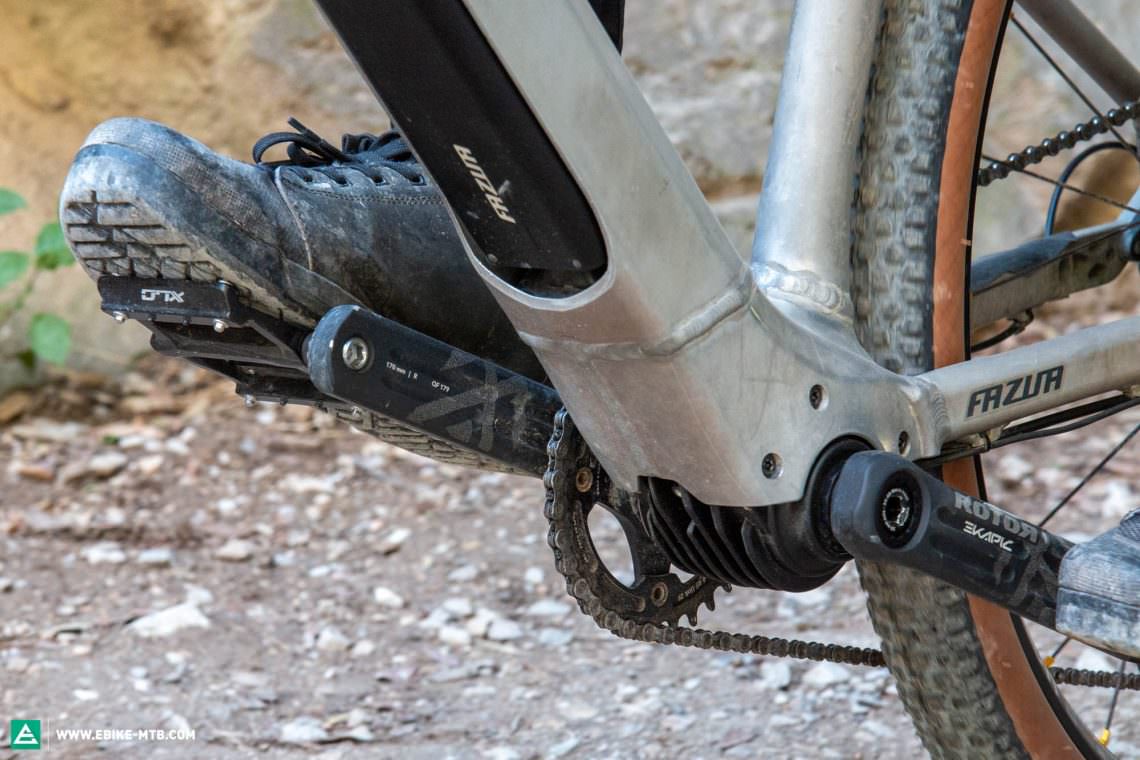
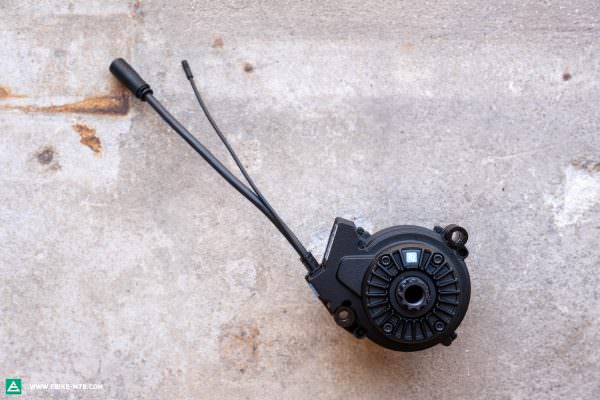
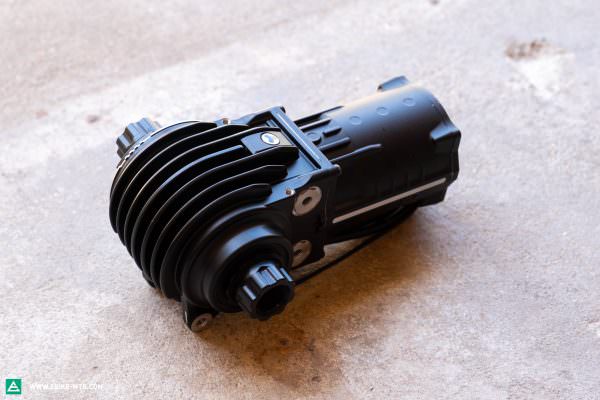
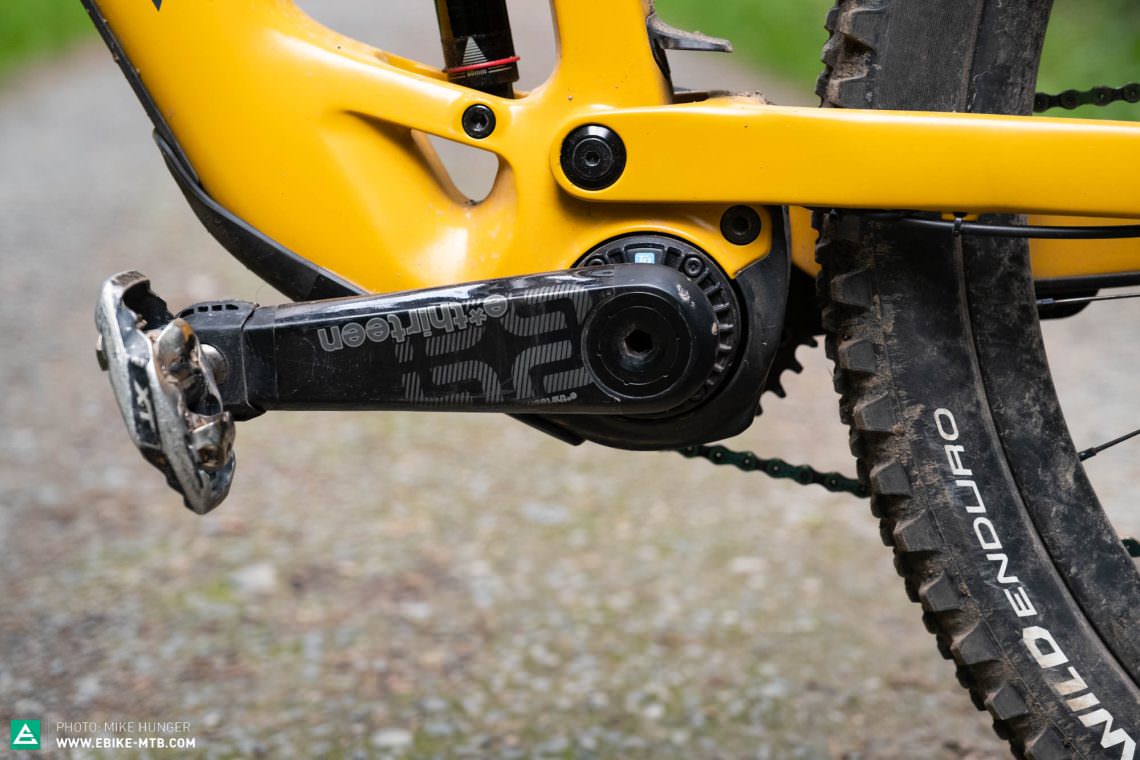
Charging and connectivity of FAZUA Ride 60 and TQ HPR 50
With both systems, the battery can be either integrated permanently into the frame or removed from the downtube. With the integrated option, bike manufacturers can choose freely where to place the charging port. On the TREK Fuel EXe, the battery is secured to the frame with two Allen bolts and can be removed for external charging once these are undone. With FAZUA, this process is even more straightforward: once you’ve removed the manufacturer’s proprietary plastic cover, you just have to unclip the battery and pull it out from the frame.
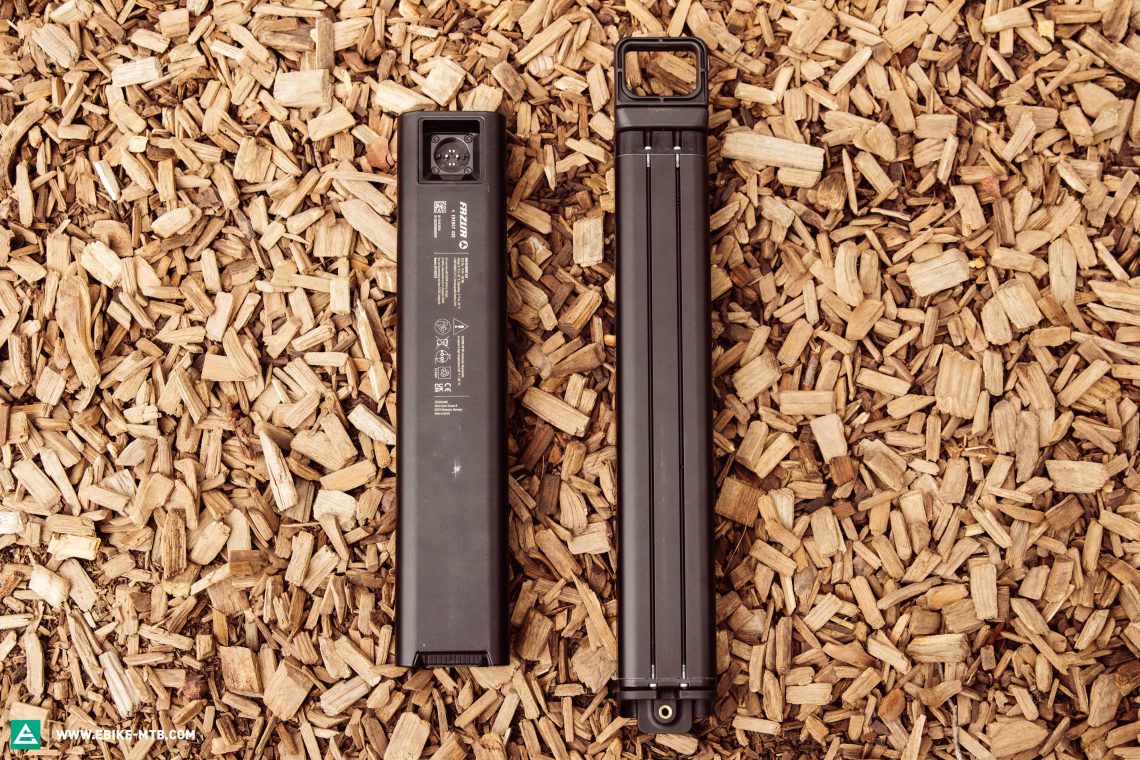
The FAZUA 430 Wh battery charges from 0 to 100 % in around 3,5 hours while the TQ battery with 360 Wh capacity takes 90 minutes from 0% to 80 % and a total of 2,5 hours to reach its full capacity. Neither of the two motor manufacturers allows for third-party batteries in their systems.
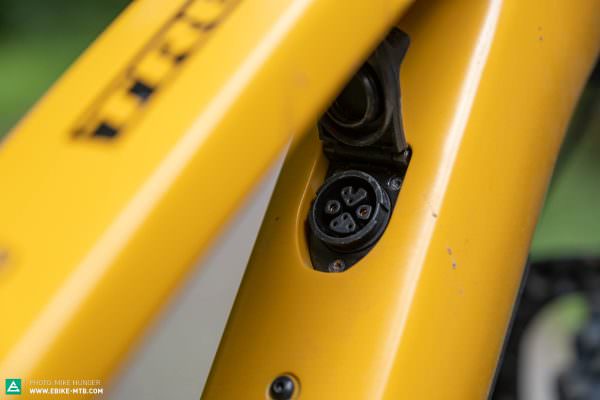
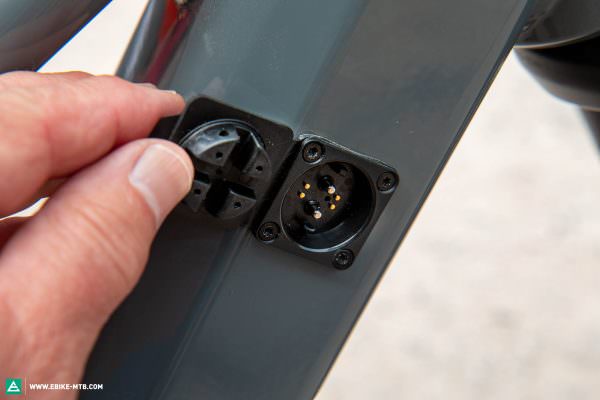
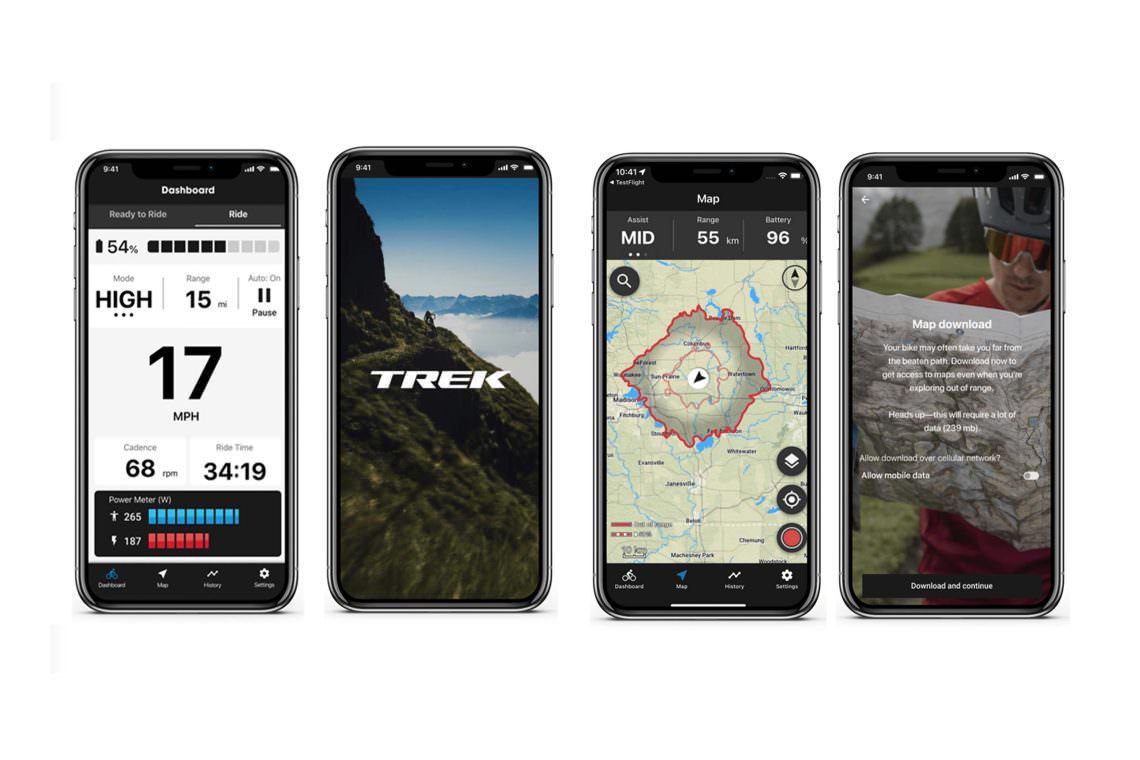
With regard to connectivity, both TQ and FAZUA offer their own companion app, allowing you to adjust the support modes of the motors. FAZUA recommend an optimal setting based on a questionnaire you fill out beforehand. Unfortunately, we haven’t yet been able to use either of the apps, so we can’t get into details yet. The TQ Bike can be connected to a Garmin device via ANT +, allowing you to display the remaining range and battery status on an external device. While the FAZUA motor comes standard with an ANT+ module, this hasn’t yet been activated – but that’s most likely to happen with a software update soon.
Ride feeling – how natural is the riding experience with the TQ and FAZUA Light drives?
Responsiveness
As we’ve already mentioned in our TREK Fuel Exe first ride review, we’ve never experienced such a natural ride feeling with an eMTB as with the TQ motor, which delivers its power discreetly but still provides enough power to negotiate technical climbs. The motor engages and disengages almost unnoticed and the hysteresis isn’t overly long either. The motor delivers its power naturally and feels as if it’s working in real time, always adapting to your pedalling input. While this actually makes you feel as if you were on steroids, you could never tell you’re riding with assistance – the TQ HPR 50 is pleasantly deceiving. Only on unexpected counterclimbs does the TQ HPR 50 punish a poor choice of gearing, throwing in the towel if the cadence is too low, thus requiring a more thoughtful shifting strategy.
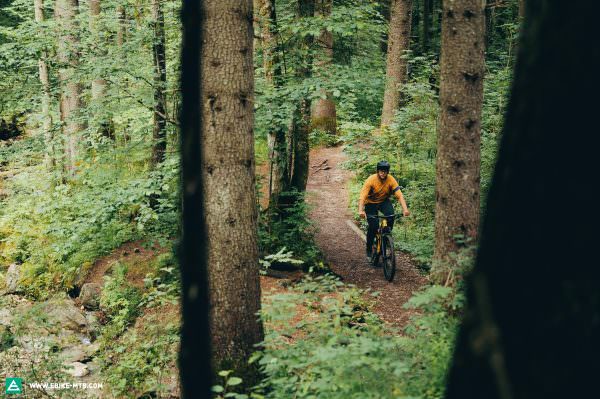
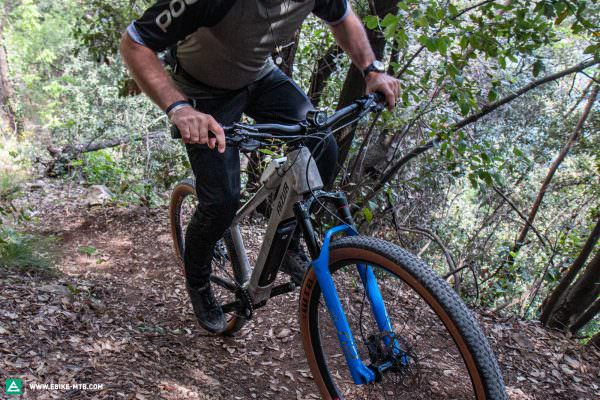
The FAZUA isn’t as discreet and natural and feels way stronger and far more abrupt in the strongest support mode. However, the so-called “ramp-up” can be adjusted from the app, but we weren’t able to try this out yet for obvious reasons. However, reducing the ramp rate should result in a more natural ride feeling. Overall, the FAZUA Ride 60 is more powerful and has longer hysteresis. Moreover, the Boost function provides that little extra oomph to negotiate steep counter climbs. Churning out 450 W, the Boost function adds an additional 100 watts to the 350 W max. continuous rating, for a total of 12 seconds while riding and 4 seconds from a standstill – and boy, does it make a difference! If you stop pedalling and take advantage of the hysteresis, the FAZUA Ride 60 needs a fraction of a second to think before resuming assistance. According to the manufacturer’s own statement, this “turbo lag” will be eliminated before the bike goes into production.
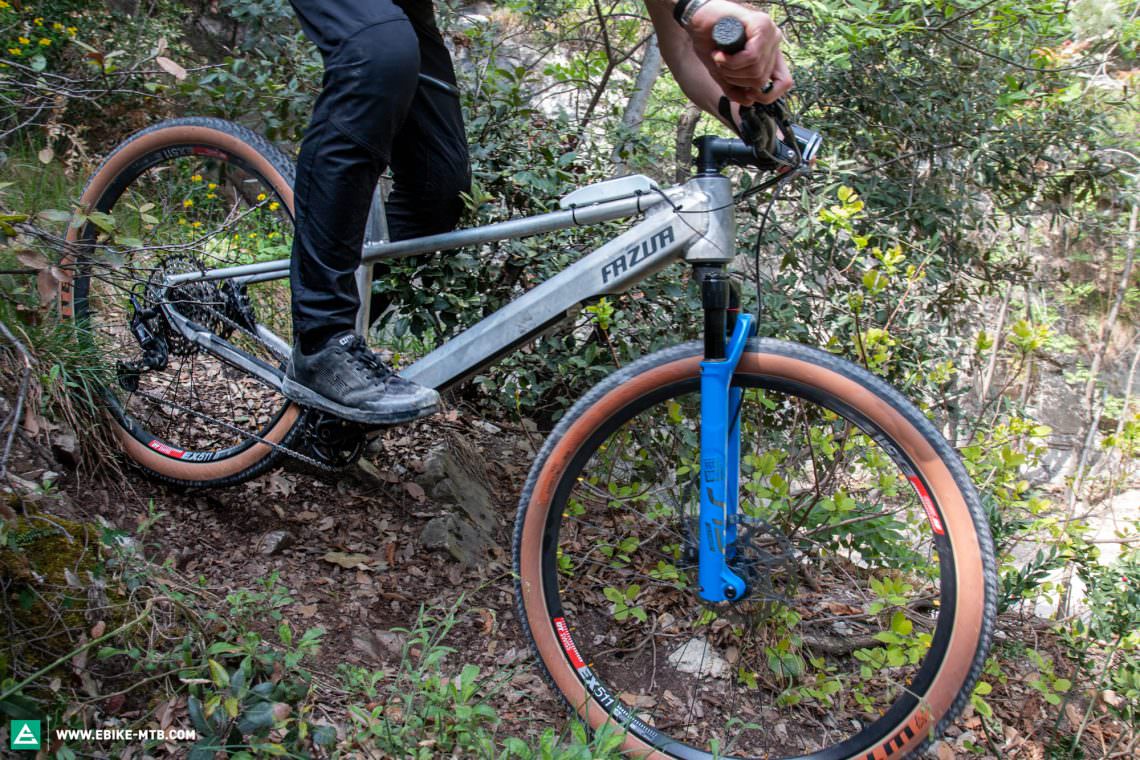
Noise level
Both motors are significantly quieter than their muscly Bosch and Shimano competitors. And the best thing about it: neither the FAZUA nor the TQ upset your flow with an annoying internal clunking noise when cruising downhill. Sound purists will fall in love with the new motors and will be finally able to enjoy the soothing sound of the freewheel and rustling forest floor.
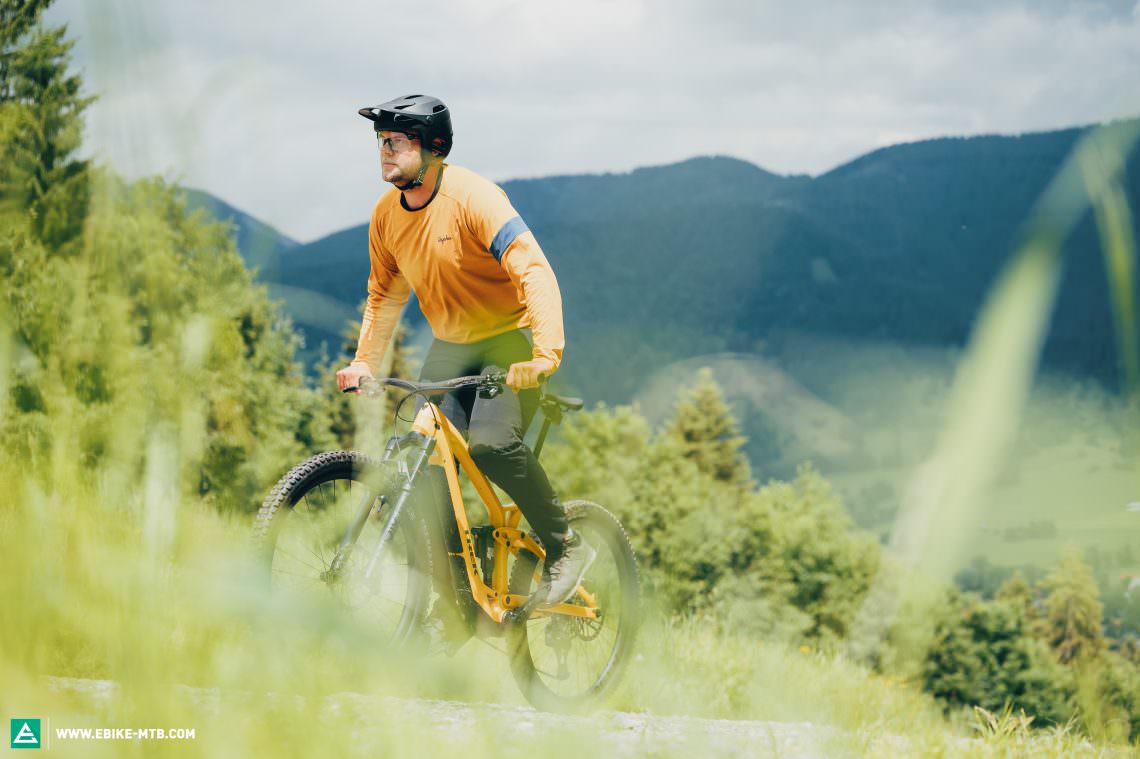
The TQ motor emits a pleasant and discreet humming noise that is so quiet that it quickly blurs into the background with the ambient noise. The FAZUA Ride 60 isn’t as quiet as the TQ but still very discreet. That being said, the noise level gets noticeably louder under load.
Are the new light-assistance motors capable of competing with the top dogs from Bosch and Shimano?
The potential of the new Light motors is currently providing substantial material for debate. It doesn’t take a marketing genius to predict that even more manufacturers will unveil new light-assistance motors in the near future, ensuring even more choice and creating a healthy competition for the 2023/24 season. Truth is that there’s a whole new generation of even better motor-assisted mountain bikes waiting just around the corner, one that will appeal to die-hard trail/enduro riders and perhaps convert them to assisted mountain biking if they haven’t already jumped on the electric band wagon. However, light-assistance motors will also appeal to touring enthusiasts who tend to ride mostly in Eco or Tour mode with big motors as well as very light riders (<70 kg) who will achieve a similar power-to-weight ratio with a light-assistancxe motors as heavy riders (< 100 kg) with a high-torque Bosch or Shimano drive.
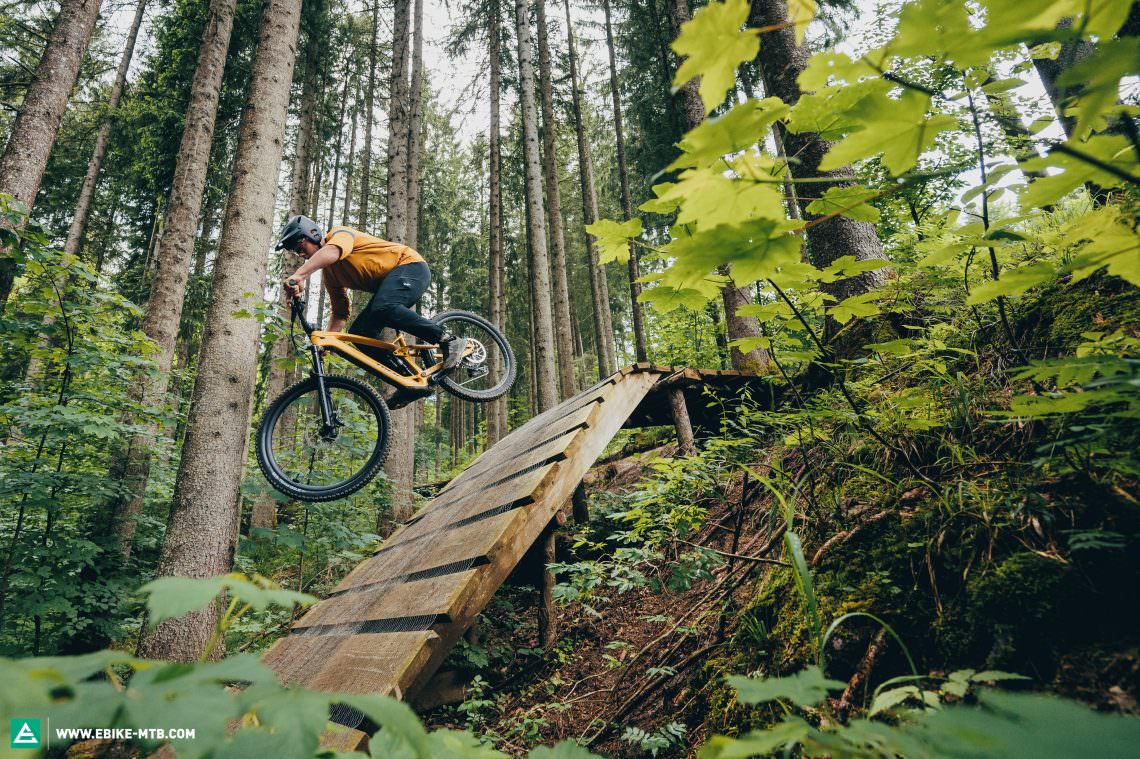
However, it’s unlikely that the new motors alone will boost the market more than the eMTB trend itself has done over the past few years, as the recent growth is mainly imputable to the huge number of newcomers joining the eMTB world. Rather, the new generation of Light eMTBs will lead to a redistribution of the market, offering an exciting alternative to analogue MTBs while giving potential buyers even more reasons not to buy analogue mountain bikes. Without a doubt, the new generation of Light eMTBs will get a fair share of the existing eMTB market, which largely relies on high-torque motors from Shimano and Bosch, because plenty of riders still carry around more weight and power than they actually need – which doesn’t do them any favours both in terms of handling and sheer practicality!
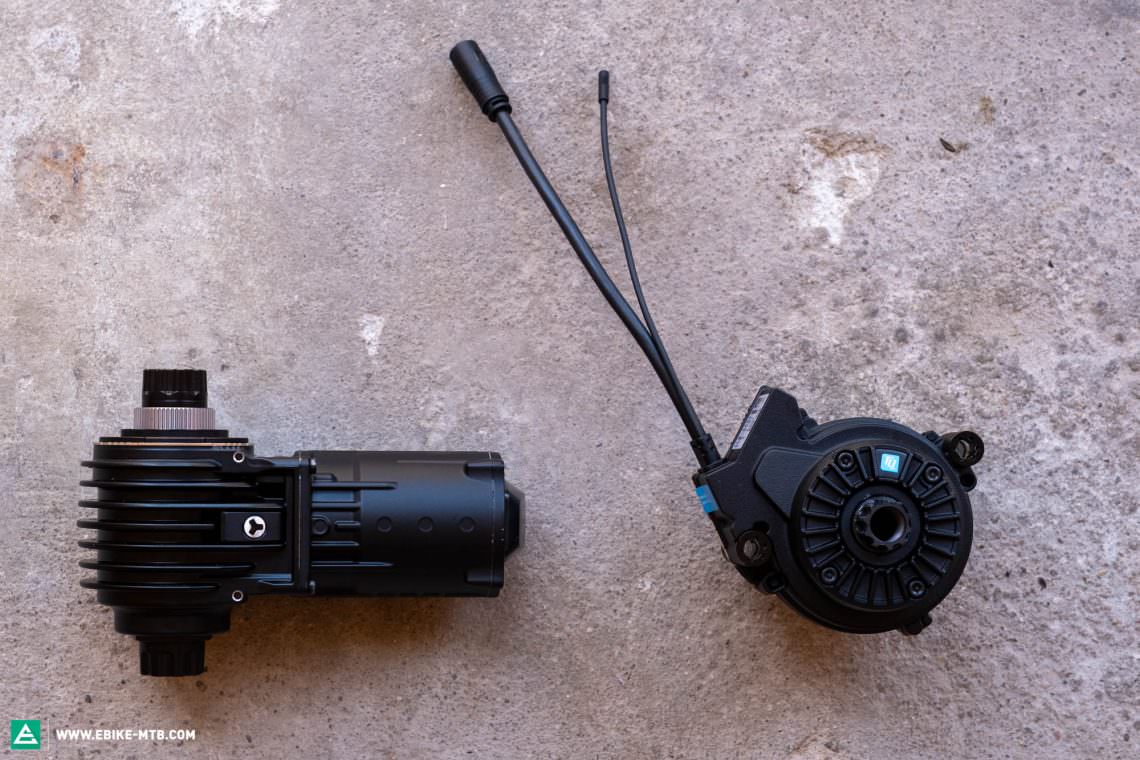
Our conclusions to the new TQ- and FAZUA-Motor
There’s no such thing as the best Light drive, but rather the right motor for each application and manufacturer. While FAZUA might still lag behind in terms of software coordination, display and remote haptics, they deliver slightly more oomph and a bigger battery. TQ, on the other hand, nailed the engineering side of things, combining clever details and a discreet, natural ride feeling following the motto “as discreet as possible and as efficient as necessary”. Not only are both motors perfectly suitable for eMTBs but also have what it takes to convert eMTB skeptics!
Did you enjoy this article? If so, we would be stoked if you decide to support us with a monthly contribution. By becoming a supporter of E-MOUNTAINBIKE, you will help secure a sustainable future for high-quality cycling journalism. Click here to learn more.
Words: Julian Schwede, Robin Schmitt Photos: Peter Walker, Simon Hänle, Julian Schwede






